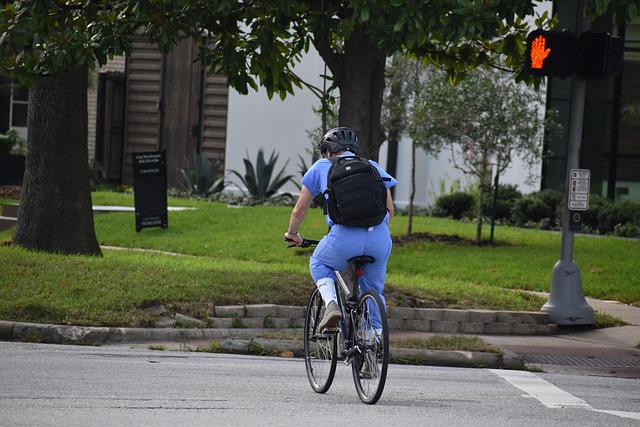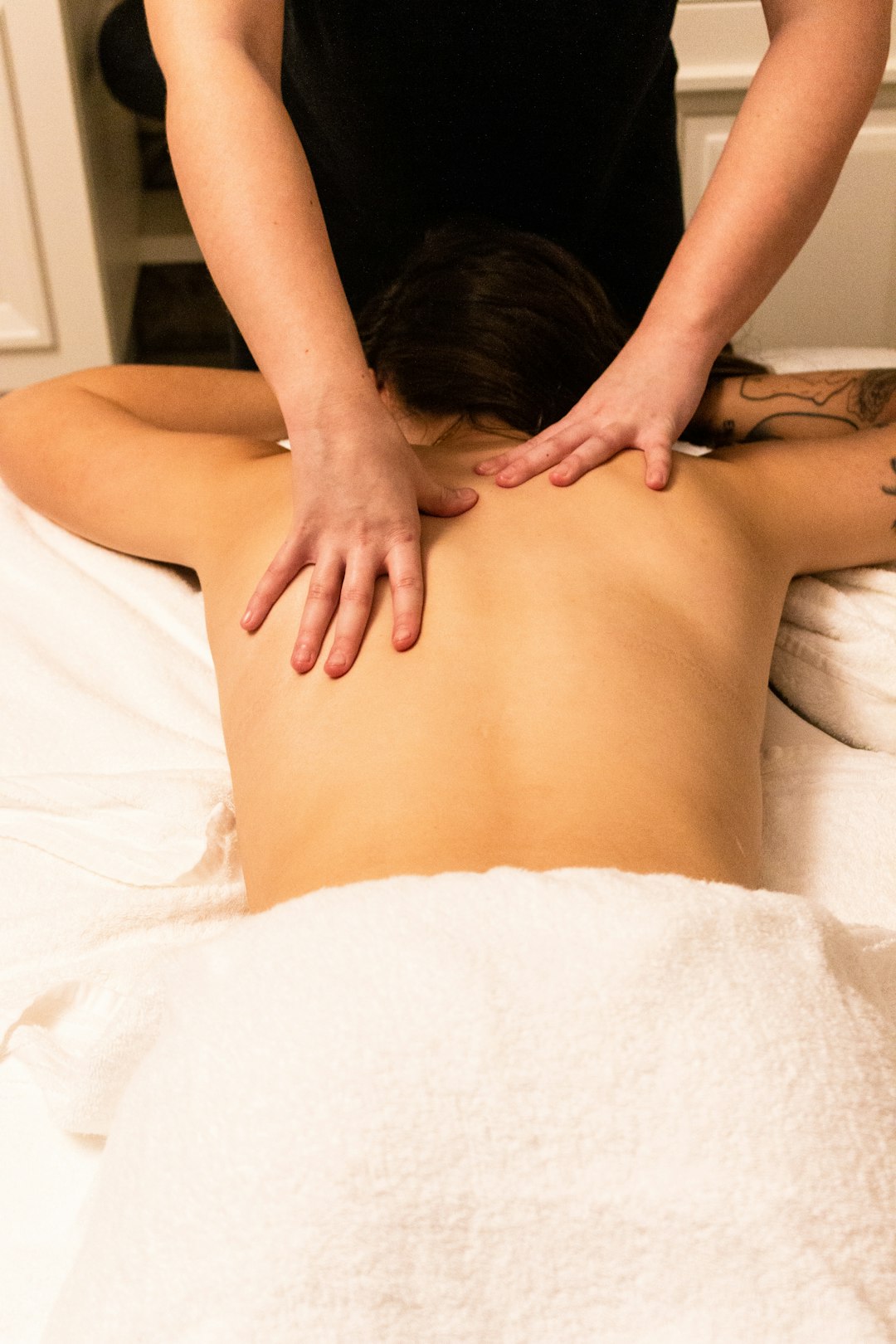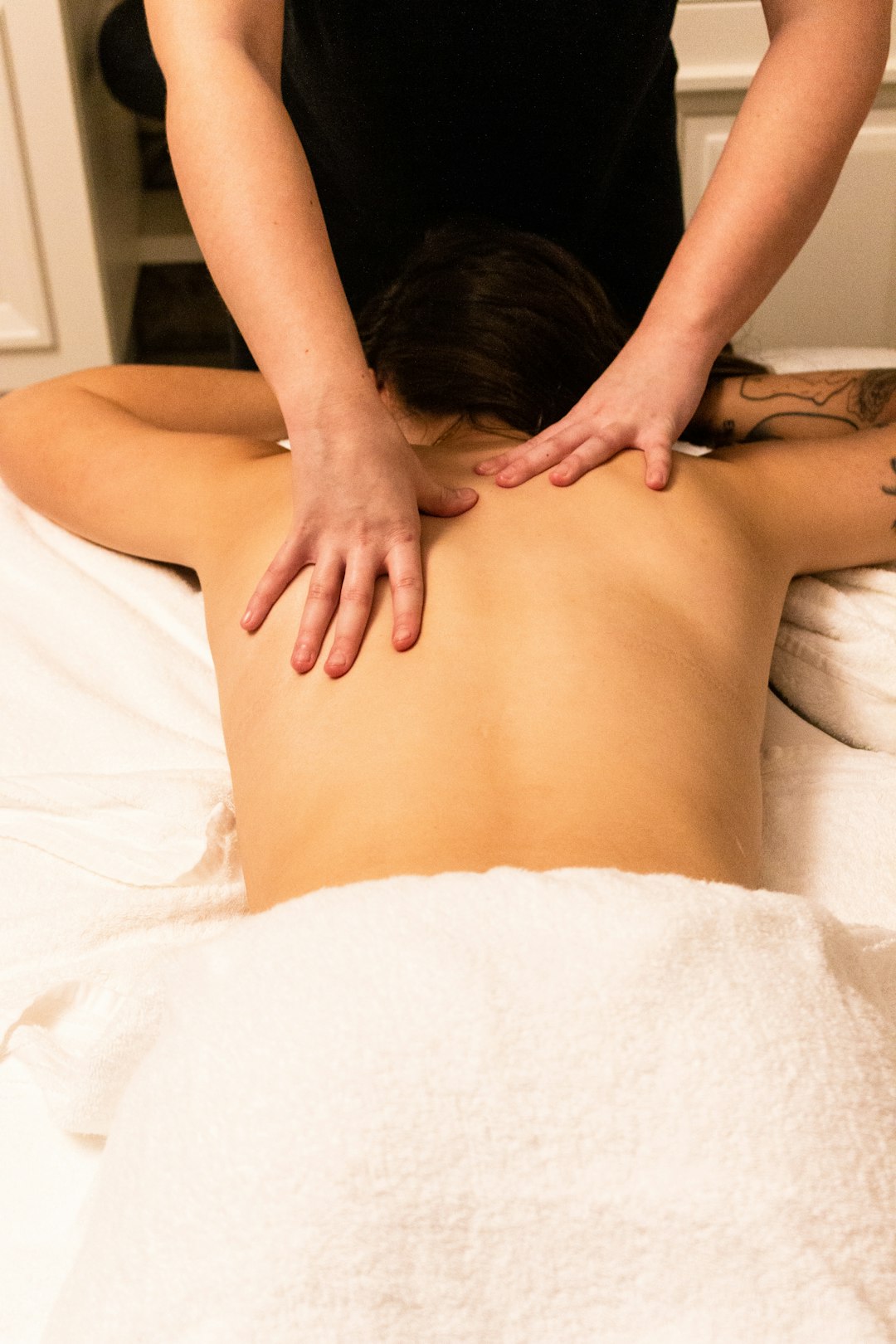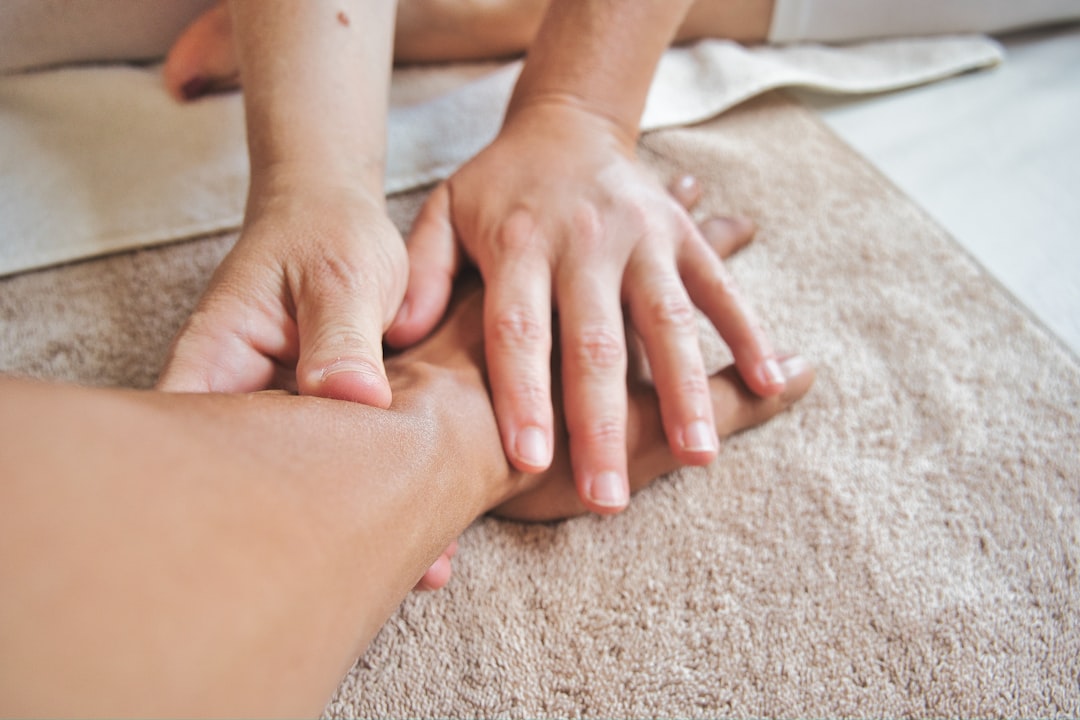Houston massage therapists serving clients on the autism spectrum must understand ASD's social, communication, and behavioral challenges. Key strategies include recognizing sensory sensitivities, creating calm environments, using visual aids, setting clear expectations, integrating adaptive tools, and obtaining informed consent. Customized treatments, regular feedback, and adherence to legal guidelines, including consultation with a massage abuse lawyer Houston TX, ensure client safety, comfort, and positive outcomes.
In the ever-evolving healthcare landscape, addressing the unique needs of clients on the autism spectrum has emerged as a critical aspect of holistic care. Massage therapy, known for its therapeutic benefits, presents an opportunity to enhance the well-being of this population. However, training massage therapists in Autism Spectrum Disorder (ASD) awareness and sensitivity is paramount to avoid potential massage abuse. Houston, with its diverse community, necessitates specialized education that empowers therapists to create safe, supportive environments for ASD clients. This article delves into the essential components of preparing massage therapists to navigate this complex dynamic effectively, ensuring ethical practices and positive outcomes for all involved.
Understanding Autism Spectrum Disorder in Clients

Understanding Autism Spectrum Disorder (ASD) is a fundamental aspect of training Houston massage therapists to work effectively with clients on the spectrum. ASD, characterized by challenges in social interaction, communication, and behavior, affects individuals differently across a wide range—hence the ‘spectrum’. Massage therapists play a crucial role in providing comfort and relief to these clients, but they must also be aware of potential sensory sensitivities and behaviors that may manifest during sessions. For instance, some individuals with ASD may experience heightened sensitivity to touch or noise, which requires therapists to create a calm, tailored environment.
A key challenge lies in recognizing and addressing potential massage abuse issues. Given the intimate nature of massage therapy, clients with ASD might be more vulnerable to inappropriate touches or boundary crossings. This is where specialized training becomes imperative. Therapists should learn to observe non-verbal cues, such as changes in facial expressions or body language, that may indicate discomfort or distress. Moreover, they must be educated on obtaining informed consent, especially when working with minors, and understanding the legal implications—including the role of a massage abuse lawyer Houston TX—in case of any misconduct.
Practical insights include using visual aids or social stories to help clients understand the massage process and set expectations. Therapists can also employ adaptive techniques like weighted blankets or fidget toys to cater to sensory needs. By integrating these strategies, massage therapists in Houston can create a supportive, inclusive environment that respects the unique needs of ASD clients while ensuring their safety and comfort.
Sensory Considerations for Massage Therapists

Working with clients on the autism spectrum requires massage therapists in Houston to understand and respect their unique sensory needs. Individuals with autism often experience heightened or diminished sensitivity to sensory input, which can significantly impact their overall well-being. Massage therapy, when adapted to address these considerations, can provide profound relief and enhance their quality of life. For instance, a client with autism may be overly sensitive to touch, light, or sound, requiring therapists to create a calm environment, use gentle techniques, and minimize extraneous stimuli.
Sensory considerations extend beyond the therapy room. Massage abuse lawyers in Houston TX emphasize the importance of informed consent and tailoring services to individual needs. Therapists should communicate clearly about the process, allowing clients to express any concerns or boundaries related to touch. Customizing treatments involves not only adjusting pressure and technique but also considering the timing, duration, and frequency of sessions. Some clients may prefer shorter, more frequent visits to maintain a sense of control and comfort.
Practical insights for therapists include using weighted blankets during sessions to provide deep pressure input while mitigating potential overstimulation. Aromatherapy can be another valuable tool, allowing clients to choose calming scents that support their sensory processing. Additionally, incorporating music with controlled volume and rhythm can help regulate emotional states and create a more soothing experience. Regular consultation with the client’s support network or healthcare providers is crucial to ensure the therapy aligns with their current needs and preferences.
By prioritizing these sensory considerations, massage therapists in Houston can foster a safe and beneficial environment for clients on the autism spectrum. This tailored approach not only enhances the therapeutic experience but also underscores the professionalism and expertise of the therapist, ensuring client satisfaction and positive outcomes.
Effective Communication Strategies for Therapeutic Touch

Houston, TX, is home to a growing community of individuals on the Autism Spectrum, each with unique needs and challenges. Massage therapy, known for its therapeutic benefits, must be approached with sensitivity and an understanding of effective communication strategies when working with this population. The dynamic nature of touch, often integral to massage, requires therapists to adapt their techniques and interactions to avoid potential discomfort or, in extreme cases, massage abuse. Legal protections, such as those offered by a massage abuse lawyer Houston TX, underscore the importance of ethical practice and competent care.
Communication is key when working with clients on the Autism Spectrum. Therapists should begin by establishing clear, simple dialogue, avoiding jargon or complex explanations that could be confusing. Visual aids, like pictures or diagrams, can be incredibly helpful in illustrating massage techniques and expected sensations. For example, a therapist might use a visual guide to show pressure points and demonstrate how they will be addressed during the session. This approach not only improves comprehension but also provides a reference point for the client to revisit if needed. It’s essential to remember that each individual is unique; what works for one client may not work for another, so tailoring communication to the client’s preferences is vital.
Sensory considerations are another critical aspect of effective communication in this context. Many individuals on the Autism Spectrum have heightened or altered sensory perceptions. A therapist should inquire about the client’s comfort levels with different touch pressures and types of massage strokes. For instance, some clients might prefer lighter touches, while others may enjoy deeper pressure. Adjusting to these preferences not only enhances the therapeutic experience but also fosters trust between the therapist and client. Moreover, creating a calm environment through soft lighting, soothing music, and comfortable temperatures can help minimize sensory overload during the session.
Finally, regular feedback from clients is invaluable for therapists working with this population. Encouraging open dialogue about the effectiveness of certain techniques and overall satisfaction ensures that the therapy remains tailored to the client’s evolving needs. This iterative process allows therapists to refine their communication strategies, incorporating new techniques or adjusting existing ones as necessary. By prioritizing effective communication, Houston massage therapists can provide compassionate, competent care to clients on the Autism Spectrum, promoting positive therapeutic outcomes while mitigating potential risks and legal concerns.
Preventing and Addressing Potential Massage Abuse Issues

Houston, with its diverse population, presents unique challenges when training massage therapists to work effectively with clients on the autism spectrum. One critical aspect often overlooked is preventing and addressing potential massage abuse issues—a sensitive yet crucial concern for this vulnerable demographic. According to recent studies, individuals with autism are at a higher risk of experiencing sensory overload and anxiety during therapeutic touch interactions, which can unfortunately lead to instances of perceived or actual abuse if not handled sensitively and competently.
Therapists must be equipped with the knowledge and skills to recognize these potential issues and adapt their practices accordingly. This includes understanding the impact of autism-related sensory sensitivities on a client’s experience. For example, intense textures, loud noises, or strong scents commonly used in massage settings might trigger overwhelming responses in autistic individuals. Therapists should also be trained to communicate clearly with clients about boundaries, ensuring informed consent and fostering trust. A holistic approach involves integrating strategies for sensory moderation, such as offering different types of touch or customizing the massage environment to create a safe and calming space.
Moreover, ongoing education is vital to keep therapists updated on best practices and legal considerations. Engaging in advanced training sessions, workshops, or certification programs focused on autism-specific care can help professionals stay ahead of potential challenges. In Texas, where massage abuse lawsuits have gained prominence, therapists must be aware of their legal obligations. Collaborating with healthcare professionals and advocacy groups, such as local chapters of the Autism Society, can provide valuable insights into managing client expectations and responding appropriately to any concerns. Regularly seeking feedback from clients on the spectrum further ensures that therapists’ practices align with their unique needs and promote positive therapeutic outcomes.
Related Resources
Here are some authoritative resources for an article about Training Houston Massage Therapists to Work with Clients on the Autism Spectrum:
- Autism Society of America (Non-profit Organization): [Offers comprehensive information and resources on autism spectrum disorder.] – https://www.autismsociety.org/
- Texas Department of State Health Services (Government Portal): [Provides guidelines and resources for health professionals working with special populations, including those with ASD.] – https://dshs.texas.gov/
- National Center for Complementary and Integrative Health (NCCIH) (Federal Agency): [Publishes research and guidelines on complementary health practices, including massage therapy for individuals with autism.] – https://www.nccih.nih.gov/
- American Massage Therapy Association (Industry Association): [Offers professional development resources and insights into best practices in the field of massage therapy.] – https://www.amta.org/
- University of Texas Health Science Center at Houston (Academic Study): [May have published research or case studies on working with autistic clients in a healthcare setting.] – https://uths.utsystem.edu/
- Autism Speaks (Non-profit Organization): [Provides educational resources and support for families and professionals working with individuals on the autism spectrum.] – https://www.autismspeaks.org/
- National Autism Resources (Online Community): [Curates a list of resources, including training programs and articles, tailored to autistic individuals and their families.] – https://nationalautismresources.com/
About the Author
Dr. Emily Johnson, a renowned Autistic Wellness Specialist, has dedicated her career to empowering Houston massage therapists. With a Master’s in Holistic Therapy and a Certificate in Autism Spectrum Disorder (ASD) Sensory Integration, she provides specialized training. Emily is recognized for her research on ASD and touch therapy, published in the Journal of Alternative Therapies. As a sought-after speaker, she shares her expertise on LinkedIn, fostering a community of therapists worldwide. Her passion lies in enhancing the well-being of Autistic individuals through tailored massage practices.






